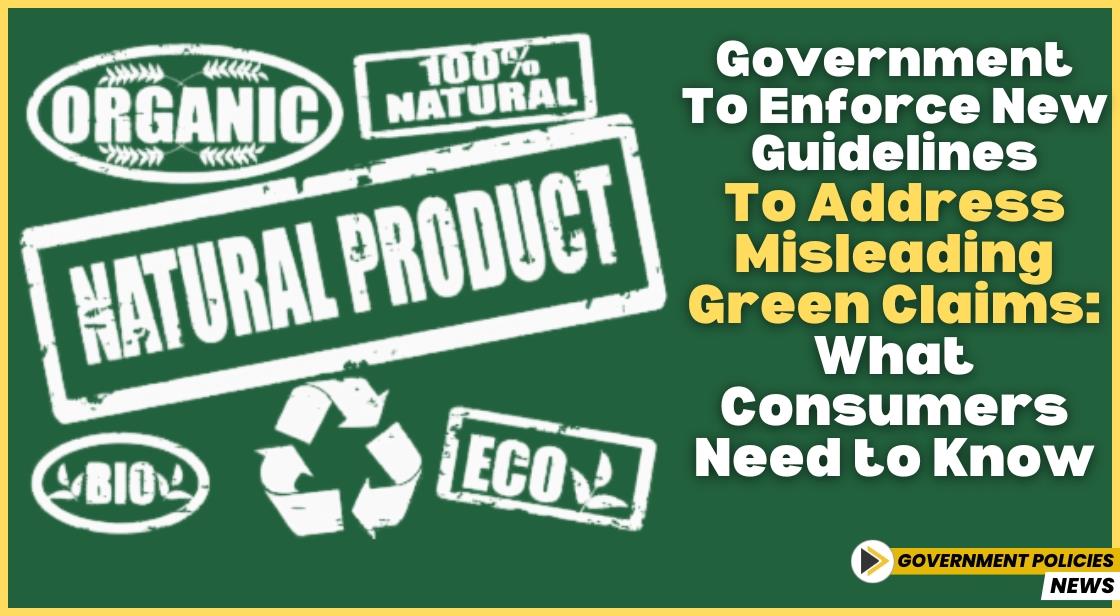Government to Enforce New Guidelines to Address Misleading Green Claims: What Consumers Need to Know

News Synopsis
Government sources have revealed that new guidelines are on the horizon to tackle misleading claims related to environmental clearances and carbon emissions. These proposed norms will be integrated into the Consumer Protection Act, aiming to ensure that consumers who invest in 'green' products are not deceived by false claims.
What the New Guidelines Will Entail
The forthcoming guidelines are set to mandate truthful and transparent disclosures about 'green' products. These guidelines will cover aspects such as:
-
Product Content: Detailed information on what the product contains.
-
Packaging: Information on how packaging contributes to sustainability.
-
Sustainability: The environmental impact of the production process and the entire production chain.
Addressing Greenwashing
The move to implement these guidelines comes in response to increasing consumer sensitivity toward greenwashing—where companies falsely advertise their products as environmentally friendly. Misleading claims exploit the trust of environmentally conscious consumers who often pay a premium for sustainable goods.
Until now, primarily electronic products have been assessed for energy efficiency through the Bureau of Energy Efficiency’s (BEE) star rating system. The new guidelines will expand the Consumer Protection Act to include a broader range of products and practices that were previously outside the scope of legal disclosure requirements.
Greenwashing Draft Guidelines Overview
On February 20, 2024, the Central Consumer Protection Authority (CCPA) released a draft for public comments titled "Guidelines for Prevention and Regulation of Greenwashing." This draft defines greenwashing as “any deceptive or misleading practice, including concealing, omitting, or hiding relevant information, exaggerating, making vague or false environmental claims, and using misleading symbols or imagery.”
Key Disclosures Required by the New Guidelines
The draft guidelines propose several key disclosures for companies making environmental claims:
-
Full Disclosure: All environmental claims must be clearly disclosed, either directly or through technology like QR codes or web links.
-
Avoid Selective Data Presentation: Claims should not selectively present data to emphasize positive aspects while concealing negative ones.
-
Clear Scope: Environmental claims must specify whether they relate to the product, manufacturing processes, packaging, usage, disposal, services, or service provision.
-
Verifiable Evidence: Claims should be backed by verifiable evidence.
-
Comparative Claims: Any comparisons with other products or services must be based on verifiable and relevant data.
-
Certification and Verification: Specific environmental claims must be substantiated with credible certification and independent third-party verification.
-
Aspirational Claims: Claims about future environmental goals must be supported by actionable plans detailing how these objectives will be achieved.
The guidelines also stipulate that vague terms such as 'green,' 'eco-friendly,' and 'cruelty-free' can only be used with proper disclosures.
Conclusion:
The impending guidelines aimed at combating misleading claims about 'green' products represent a significant step towards enhancing transparency and fairness in the consumer market. By incorporating detailed requirements for environmental claims and emphasizing the need for verifiable evidence, these new norms are designed to protect consumers from deceptive greenwashing practices. The expanded scope of the Consumer Protection Act will ensure that a broader range of products and practices are subject to scrutiny, addressing gaps that previously allowed misleading claims to go unchecked.
As consumers increasingly seek sustainable and eco-friendly products, these regulations will play a crucial role in ensuring that their investments are truly contributing to environmental sustainability. By holding companies accountable for their green claims, the guidelines are expected to foster a more transparent and competitive market, ultimately benefiting both consumers and genuine green businesses.
The focus on clear and honest communication about environmental impacts will not only enhance consumer trust but also drive companies to adopt more sustainable practices. As the draft guidelines move towards finalization, it is hoped that they will set a new standard for environmental advertising and contribute to a more informed and responsible marketplace.
You May Like









